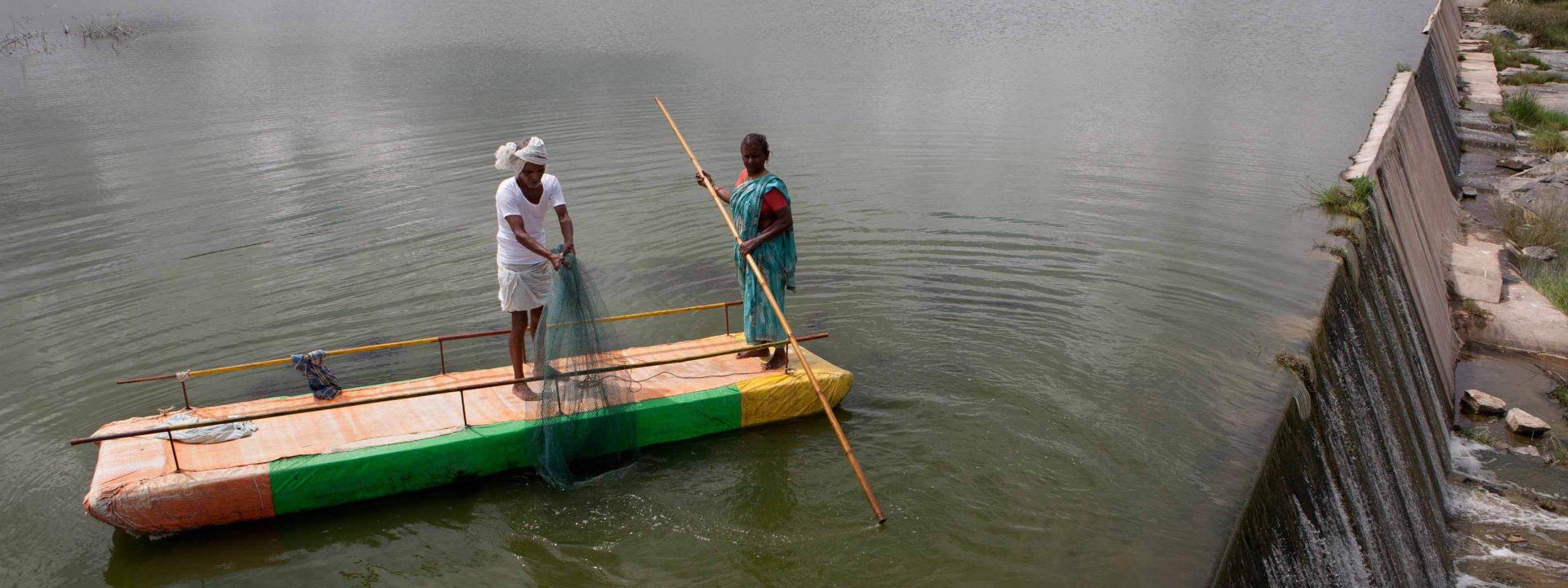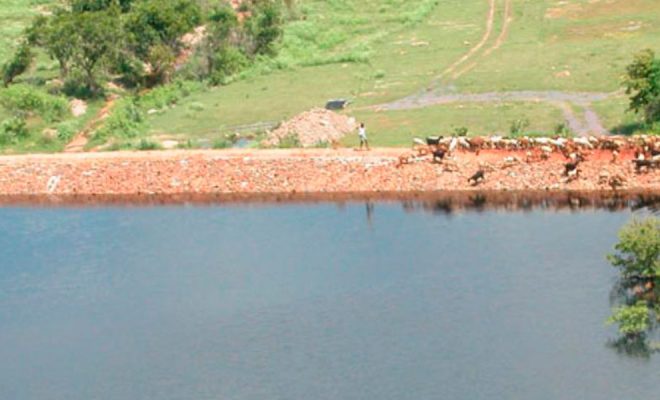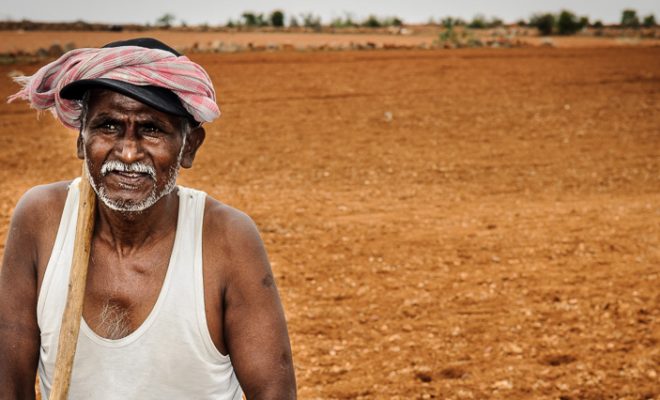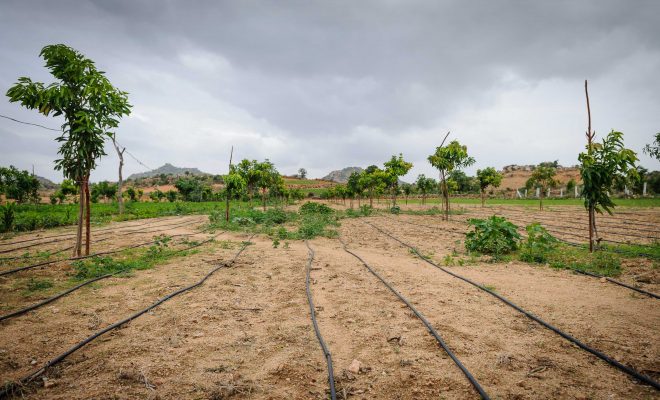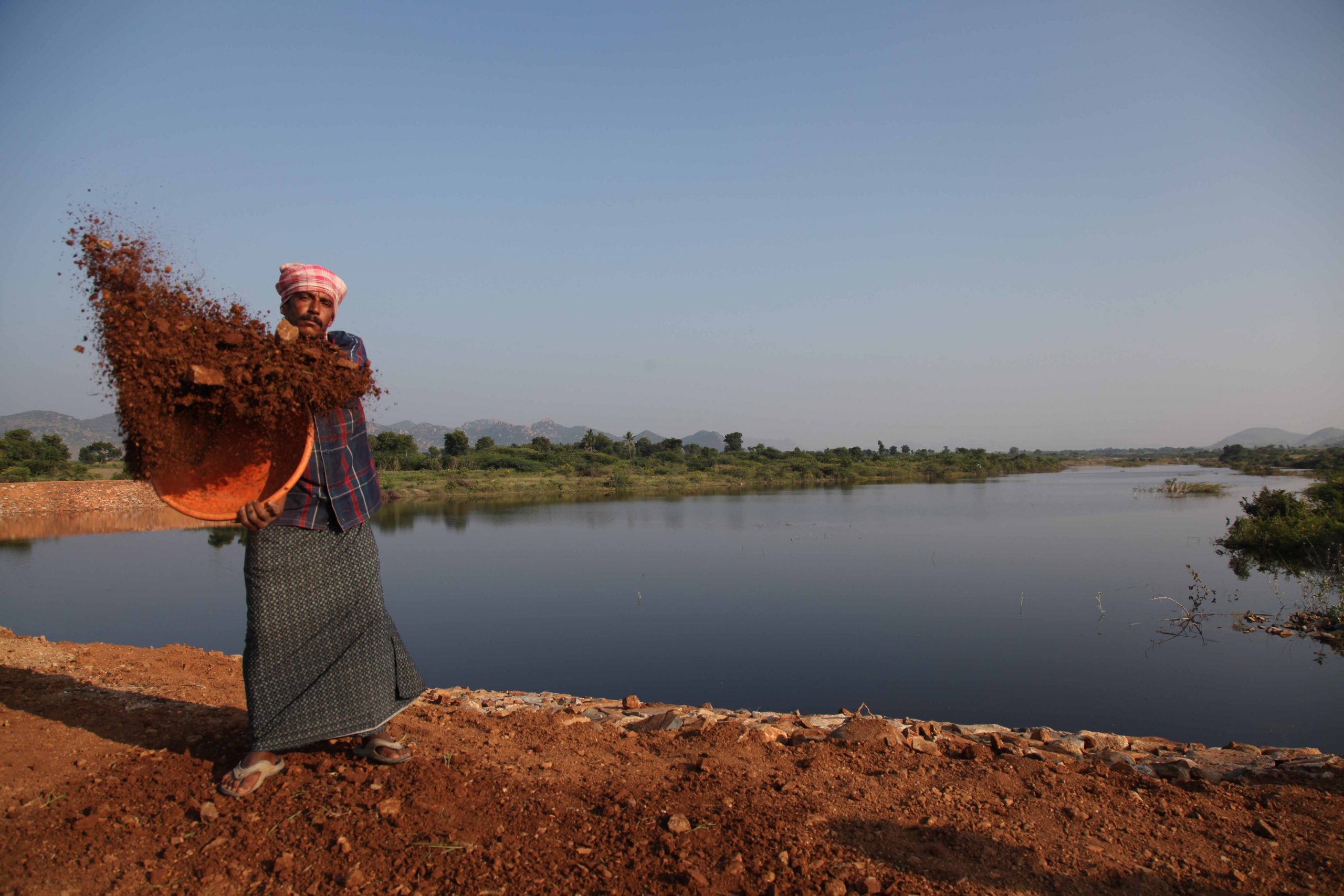
© Fundación Vicente Ferrer
The rainwater collection and storage infrastructures are based on the creation of small reservoirs with a capacity ranging from 10,000 to 80,000 m3, in land provided by the farmers themselves.
In 2016, according to the World Bank, India had an agricultural GDP of more than 16% of the total, the highest among the emerging economies (China 5.6% and Brazil 9.17%), after its neighbor Pakistan. Agriculture employs over 51% of the active population and absorbs just over 80% of the water consumption.With more than 1.335 billion inhabitants, India is the second most populated country on Earth, and with an annual population growth of 1.17%, it will probably surpass China in 15 years. Managing this immense amount of water for agriculture is one of the greatest development challenges ever faced by a country.
The impoverishment of semiarid areas
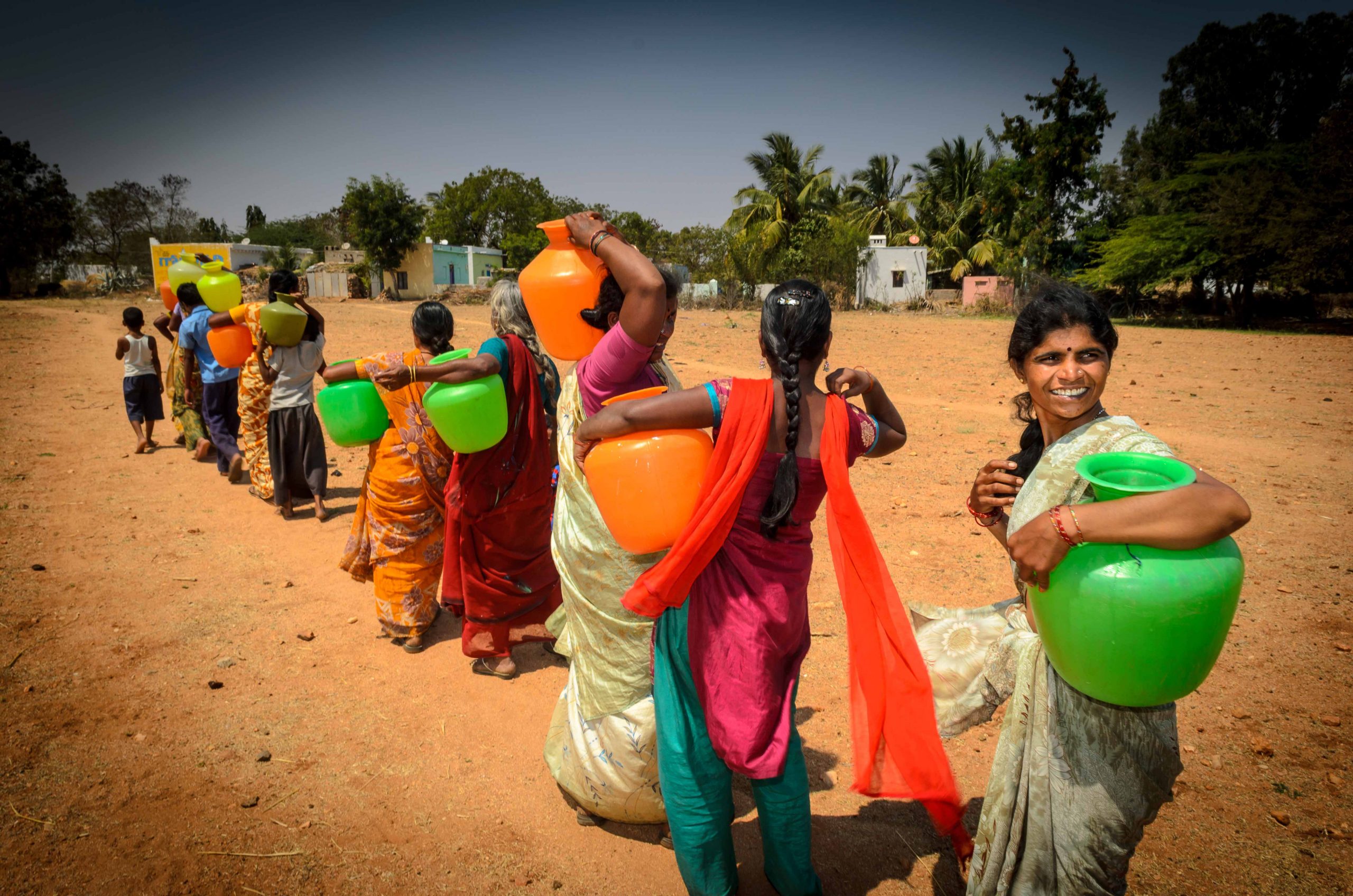
©Carlos Garriga/ We Are Water Foundation
India’s agricultural development is uneven, with very impoverished territories, such as the semiarid regions in the south, where the Anantapur district is located, in the Andhra Pradesh state. The We Are Water Foundation has collaborated with the Vicente Ferrer Foundation in aid projects in this region for the last 10 years. The inhabitants of this area have been fighting the aridity of the land and the permanent menace of drought for years.Lately, farmers have had to face the decrease in the level of aquifers and the marked irregularity of monsoons, the summer rains that set the pace of life in most of the Indian territory.
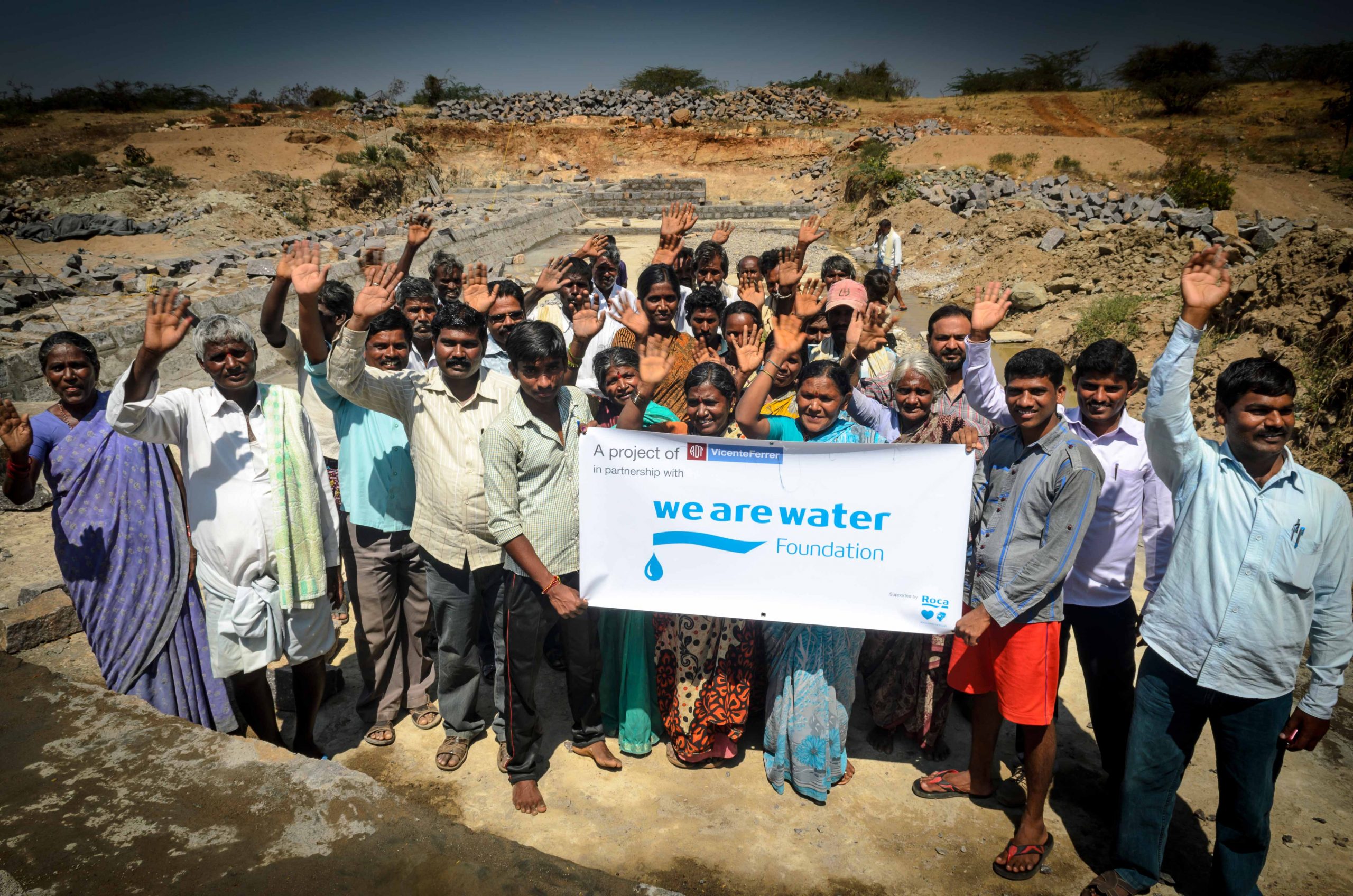
© Carlos Garriga/ We Are Water Foundation
Between 1984 and 1986 the drought created a national emergency crisis. It caused the ruin of many farmers who, pushed by debts, were forced to sell their land at a loss and emigrate to large cities where most of them ended up crowded together in slums without the minimum conditions for a dignified life. Many others were not able to bear it and committed suicide: in the last three decades, 300,000 farmers have taken their own lives throughout the country after losing everything.
The crisis revealed another agricultural practice with less future prospects for small farmers: the monoculture of peanuts, a legume that is very vulnerable to the delay of rains, which depletes the land and forces farmers to constant investments in pesticides. As in every monoculture, the peanut has a profitability linked to market swings, which does not always guarantee the benefit of the local communities that produce it.
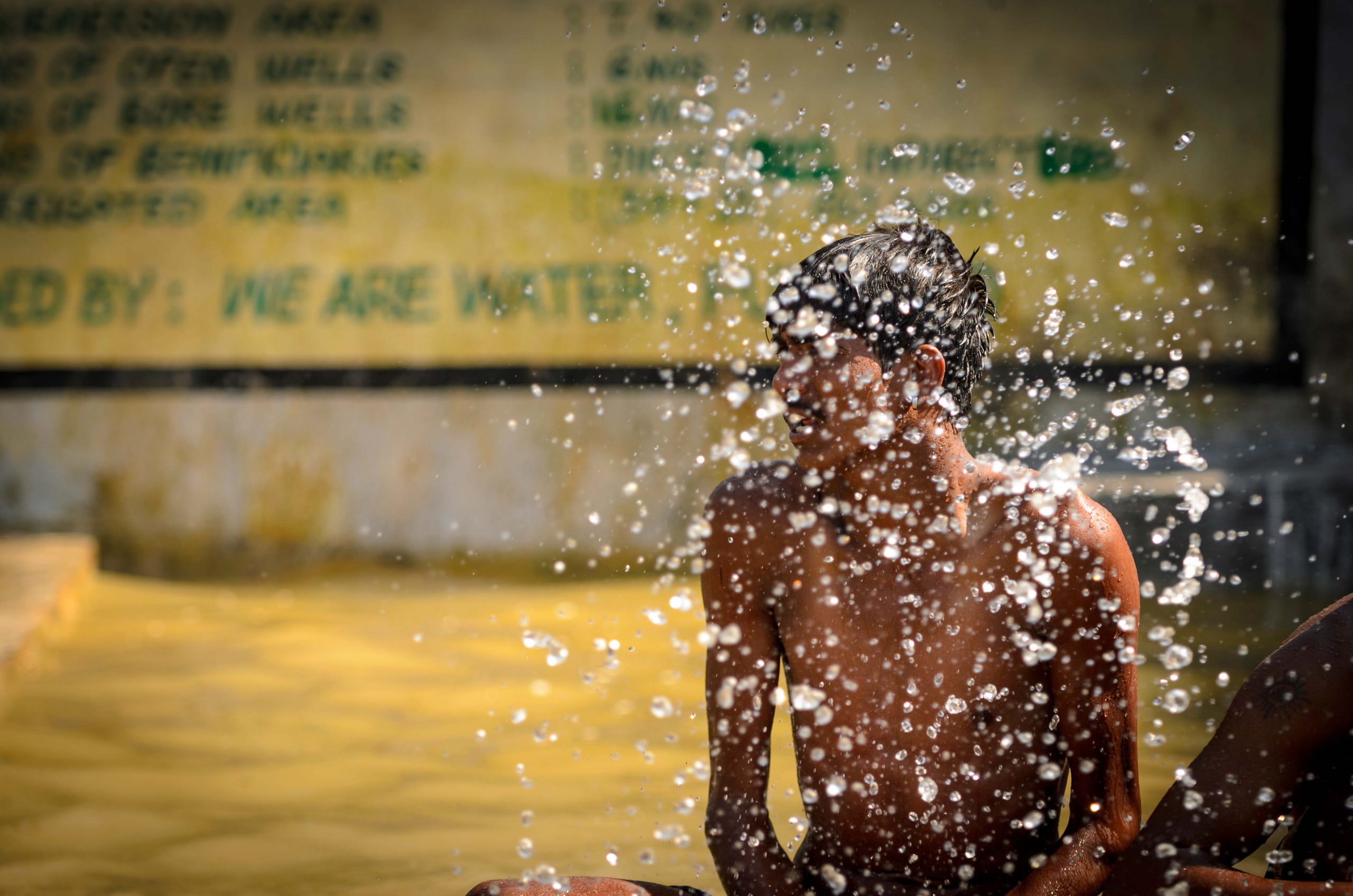
©Carlos Garriga/ We Are Water Foundation
The last great drought, in 2016, was the most intense in the last 140 years, but many farmers in the region were more prepared and had more diversified crops. The Vicente Ferrer Foundation had built almost 3,000 reservoirs and other rainwater collection structures since 1988, which had increased the resilience of small farms in the region. When the We Are Water Foundation started its activities in 2010, it collaborated with the organization led by Anna and Moncho Ferrer in projects aimed at the construction of these infrastructures, such as in Ganjikunta and Girigetla, and the more recent ones in Settipalli and D.K.Thanda4.
Hydrological benefits
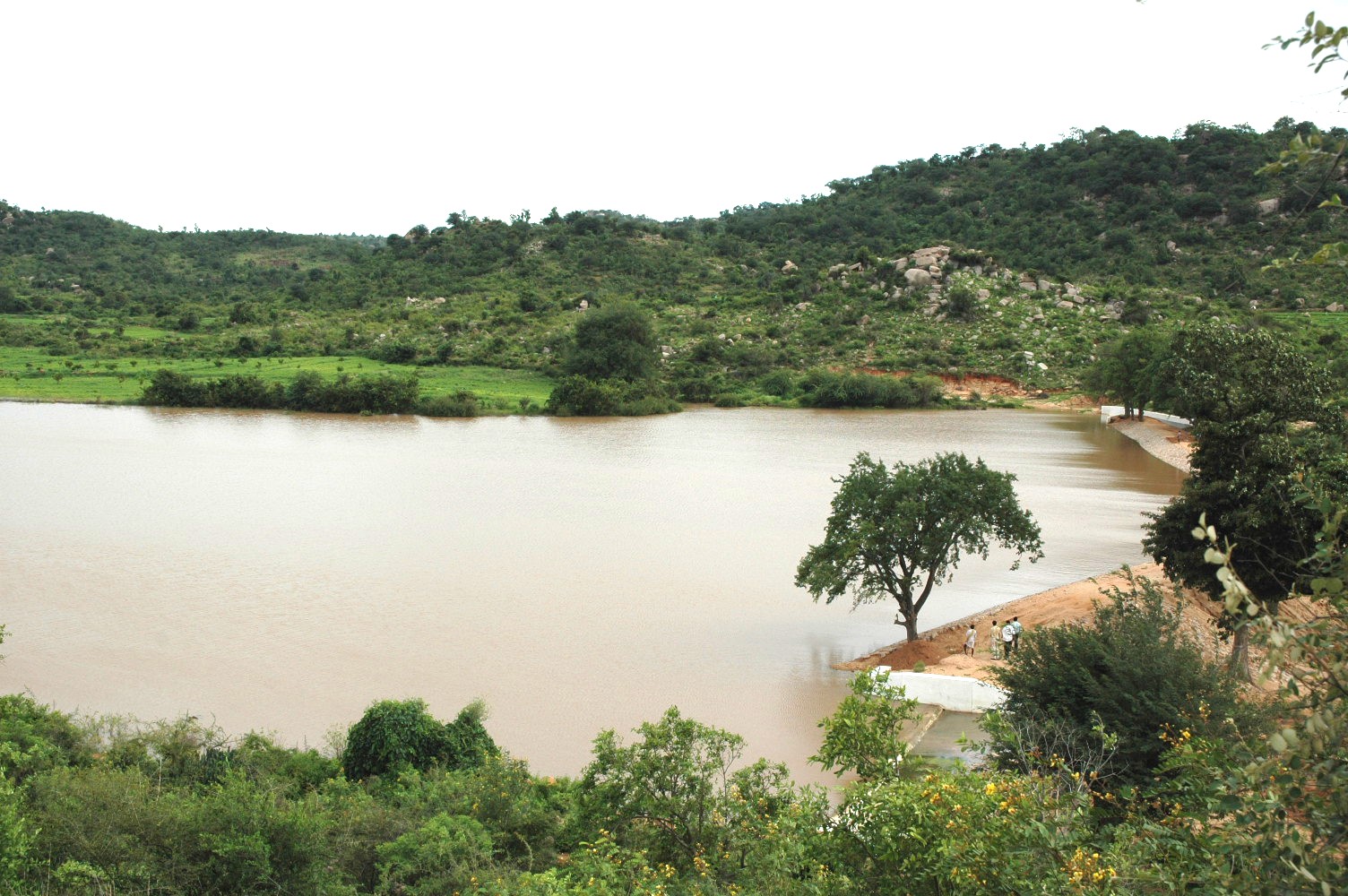
© Nagappa
The first effect of collected water is a recharge of the aquifers by infiltration. Those benefitted are the users of the surrounding wells.
The western area of Andhra Pradesh, where Anantapur is located, has an average annual rainfall of 540 mm. This is a similar quantity to that of many Mediterranean countries, large areas of the USA and Central America, and significantly higher than in many regions of the Middle East. The problem is that 70% of this rainfall takes place in the monsoon period, from June to September, and with heavy downpours in some cases that cause strong runoffs with the consequent loss of water that does not penetrate an increasingly eroded land due to deforestation. The substratum of crops acidifies and the aquifers, already overexploited, are not adequately recharged; as a consequence, the region enters a vicious circle of degradation.
The rainwater collection and storage infrastructures are based on the creation of small reservoirs with a capacity of 10,000-80,000 m3, on land provided by the farmers themselves.
The first effect of collected water is a recharge of the aquifers by infiltration. Those benefitted are the users of the surrounding wells. A reservoir with a capacity of 48,300m3 , such as the one planned in D.K.Thanda4, has an area of influence of 21 wells, allowing the irrigation of 49.37 hectares. The humidity of the surrounding land allows reforestation, essential to stop the degradation of the soil, having therefore a positive impact on the ecological balance of the area as it attracts different animal species such as birds and fish.
The participation of the community, a basis for sustainability
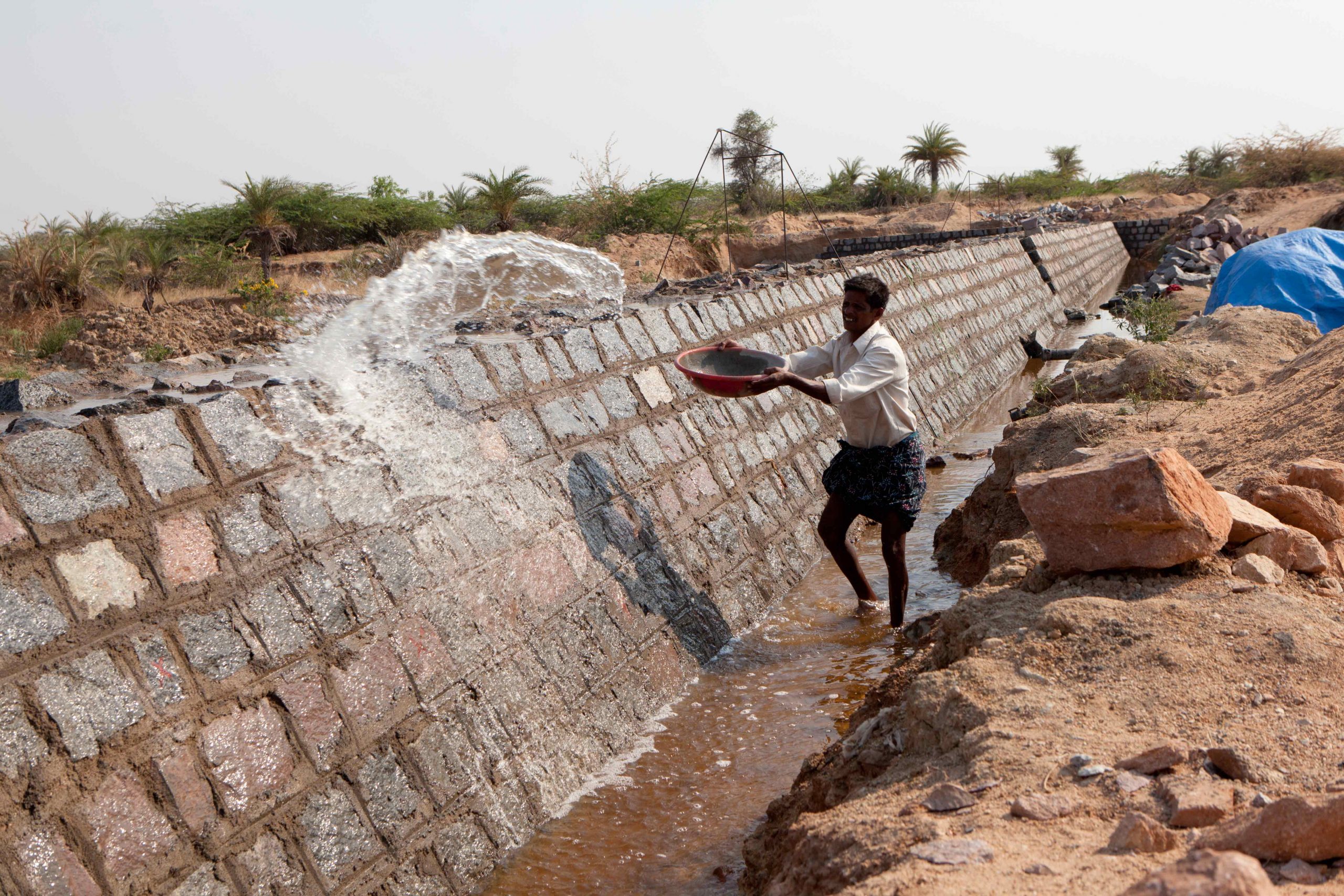
©Juan Alonso
The community makes the project its own and organizes itself for the construction of the reservoir and the management of water, thus taking responsibility for its efficiency and maintenance.
In southern India, rainwater was traditionally used for irrigation by means of its storage in tanks. In the precolonial period, the construction and maintenance of these tanks was a priority, both for the authorities and the community. However, the high maintenance costs and the lack of resources for this purpose have led to the degradation of these tanks, which has contributed to the deterioration of the resilience of small communities in the face of droughts.
In 1997, a change in government policies highlighted the need for an update in the traditional collection and irrigation systems and the management of water resources was partially transferred to the towns and the associations of users. This was an important step towards the recovery of the practices that inspire small reservoirs.
The construction projects of these infrastructures need to take into account their sustainability; they need to be fully managed and maintained by the community, which needs to receive adequate training and actively participate both in the planning and implementation.
Self-management, a powerful social tool
This is how the project starts with training workshops for farmers and their families, while plans are approved and the community’s commitment to the building and maintenance of the infrastructure is guaranteed.
The participation of these communities, traditionally excluded from the decision-making processes, in the design and management of the projects generates a very positive change towards their empowerment. The community makes the project its own and organizes itself for the construction of the reservoir and the management of water, thus taking responsibility for its efficiency and maintenance. In addition to being the best guarantee for sustainability, this self-management facilitates the overcoming of the caste system culture which, although officially abolished in the Constitution of 1949, continues to be entrenched in the mentality of rural and agricultural India.
The hidden life of water
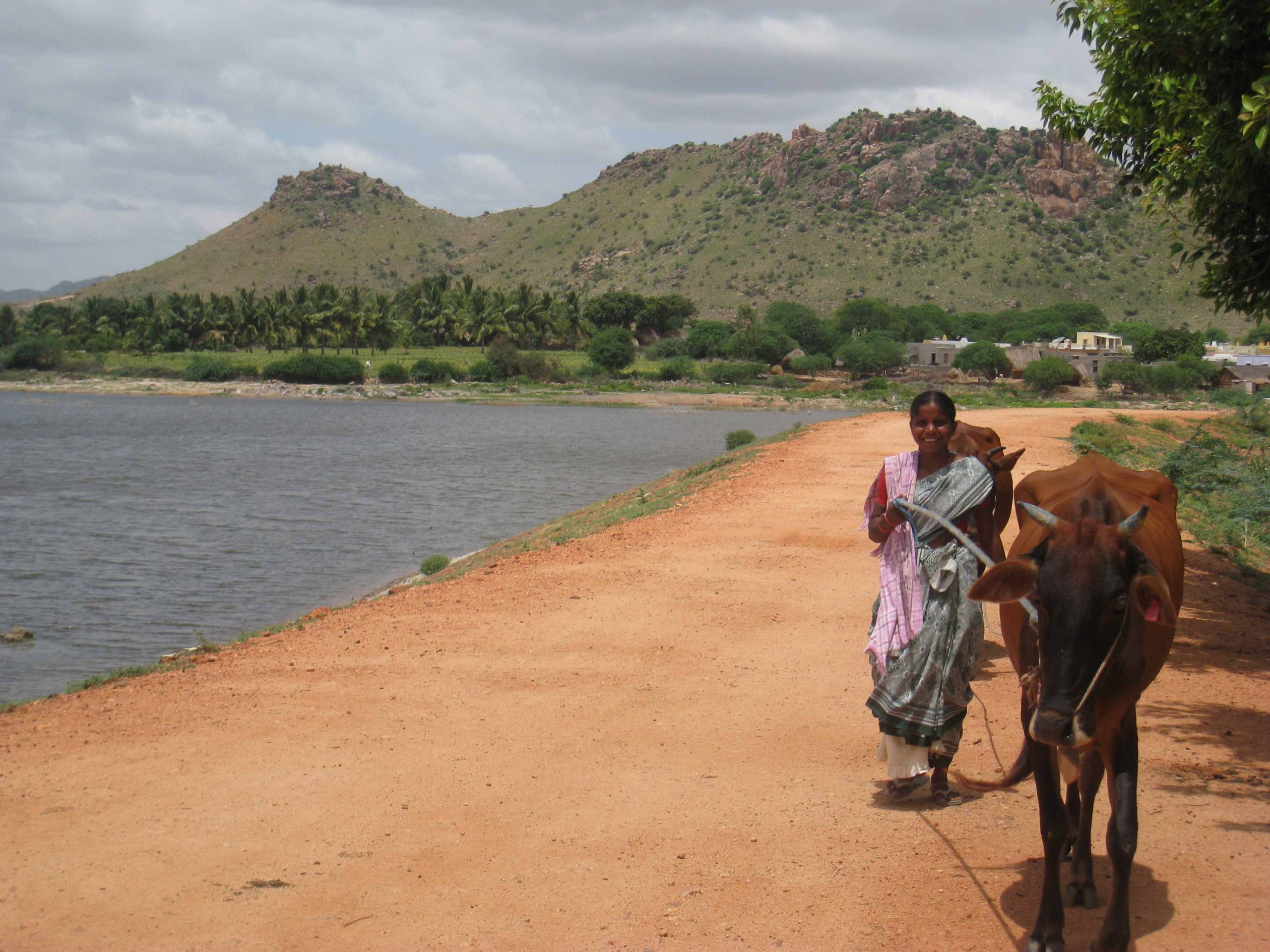
©Nuria Pardrès i Pujol
Livestock also benefits, as animals can drink water directly from the reservoir.
Everything changes around reservoir water. The possibility of diversifying crops opens up a future with less uncertainty for farmers, who had spent decades only farming peanuts. With the new availability of water, they can combine different types of crops: short-term crops, which take two or three months, such as watermelons, lentils or peanuts; and long-term ones, such as mango, which require around five years. Livestock also benefits, as animals can drink water directly from the reservoir, and the water mass also allows the development of other sources of income and food, such as aquaculture and fishing.
This diversification allows producers to increase their income, enabling them to stay in their land, putting down roots in their culture and providing schooling for their children. Women, freed from the need to collect water when the wells are dry, can devote more time to their education and to the support of the community. The diet of families is richer and the environment recovers.
The world of agriculture looks to India as a benchmark: its fight against drought brings hope and will provide solutions to millions of farmers struggling with aridness. Overpopulation always exerts strong pressure on natural resources and the water supply is increasingly problematic. According to FAO, India will need to produce almost 350 million tons of grain by 2025 in order to meet its needs in terms of food and fodder for livestock. To do this, not only will the country have to recover its aquifers and guarantee the availability of water, it will have to increase the efficiency of the irrigation systems that use surface water from 40 to 50% and of those using groundwater from 40 to 72%.
There is therefore a long way to go to achieve a reassuring level, but the training provided by these rainwater collection and storage projects is a valuable tool in the fight for the adaptation to climate change and food security. They are the basis of a society that is involved and responsible in the use of water, without which no progress is possible.


